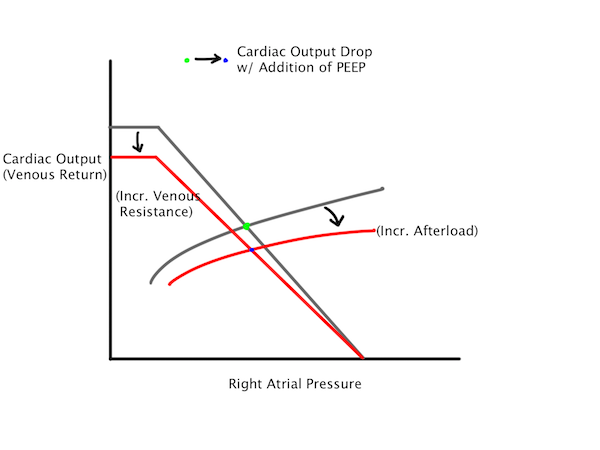PEEP PEEP PEEP
/Ventilator management can be one of the more intimidating aspects of caring for critically ill patients both in the ED and in the prehospital setting. There are several great #FOAMed resources out there on varying aspects of ventilator management including the well-known series by Dr. Weingart of emcrit.org (here and here). Ventilator management can be an absolutely massive topic but for this post, and specifically for the embedded video below, I wanted to do a little deeper dive on only one of the components of ventilatory management: PEEP. The video goes into the details of what PEEP is, what it does for you from an oxygenation standpoint, and what it can do to the patient from a hemodynamic standpoint. The concept of intrinsic and extrinsic PEEP is also explored (including a discussion of what happened when you apply external PEEP to a patient that already has intrinsic PEEP <spoiler> their lungs don’t explode (usually).
One of the takeaways from the video should be the hemodynamic changes that occur with the application of PEEP. Take a look at the figures below to get a closer look at the changes that occur in thoracic venous resistance and right ventricular afterload with the application of PEEP. For a deeper dive into the interplay of venous return and cardiac output, the 2 part article series by Funk, et al published in Critical Care Medicine in 2013 (links in the references) are HIGHLY recommended reading.
Step 1 - Application of PEEP to "normal" (not significantly volume depleted individuals)
Step 2 - Administration of Volume
Step 3 - Cardiac Output Changes in the setting of Significant Volume Depletion and High Levels of PEEP
A Point of Emphasis & Clarification...
As pointed out on twitter by Scott Weingart, changes in PEEP increase right ventricular after load but can reduce left ventricular afterload.
@UCMorningReport Jeff, comments don't seem to be working on TtS site: great work on PEEP post! may want to make clear that PEEP [cont..]
— Scott Weingart (@emcrit) June 17, 2014
@UCMorningReport increases afterload on RV but decreases afterload on the LV latter is 1 of the prime motivations for the use of CPAP in APE
— Scott Weingart (@emcrit) June 17, 2014
References
- DeGiorgi, A. & White, M. (2008) Ventilator Management: Maximizing Outcomes in Caring for Asthma, COPD, and Pulmonary Edema. Emergency Medicine Practice. 10 (8)
- Funk, D., Jacobsohn, E., & Kumar, A. (2013) The Role of Venous Return in Critical Illness and Shock - Part 1: Physiology. Critical Care Medicine. 41 (1): 255-62. doi: 10.1097/CCM.0b013e3182772ab6
- Funk, D., Jacobsohn, E., & Kumar, A. (2013) The Role of Venous Return in Critical Illness and Shock - Part 2: Shock and Mechanical Ventilation. 41 (2):573-9. doi: 10.1097/CCM.0b013e31827bfc25
- Carmez, P., Borges, J., Tucci, M., Okamoto, V., Carvalho, C., Kacmarek, R., Malhotra. A, Velasco, I., Amato, M. (2005) Paradoxical responses to positive end-expiratory pressure in patients with airway obstruction during controlled ventilation. Critical Care Medicine. 33 (7): 1519-28.







